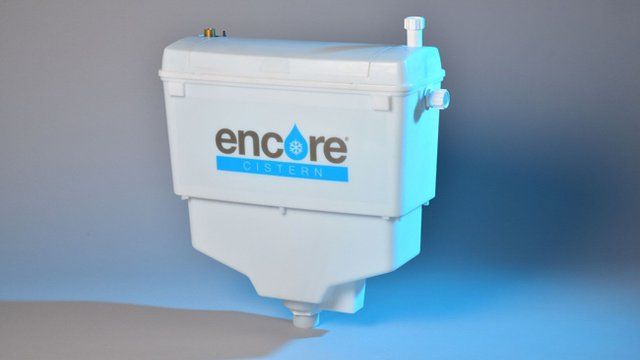Cistern Uses A/C Condensate to Flush Toilets
Published on by Water Network Research, Official research team of The Water Network in Technology
The world's first cistern to use condensate from air conditioning units to flush toilets has been launched and could save 4.7 billion liters of water a year for the 1,477 U.S. hotels currently being built.
The Encore system uses a free, sustainable water supply that has previously been drained to waste.
Encore is also suitable for apartments, offices and anywhere with toilets and air conditioning.

The Encore system uses a free, sustainable water supply that has previously been drained to waste. Encore is also suitable for apartments, offices and anywhere with toilets and air conditioning.
Encore Technical Director, David Davis, said: "Air conditioning units have a pipe that drains all the condensate away,” said David Davis, Encore’s technical director. "All buildings need toilets so why wouldn't you use a cistern that recycles a free, sustainable water source especially when there is a global water shortage crisis?"
Water savings
Data from hotel specialist STR Global shows 191,832 rooms in 1,477 hotels are currently being built in the U.S. Compared to traditional cisterns, using Encore would save the average 130-bed US hotel 3.19m liters based on standard 80 percent occupancy levels. In total, Encore would save them 4.7 billion liters of water a year, filling the equivalent of 1,880 Olympic swimming pools.
Encore holds 18 liters of water - three times more than a conventional cistern but its dual-chamber design means it fits like standard models. The bottom chamber holds 6 liters, which comes from the mains pipe. The upper 12-liter chamber is filled with air conditioning condensate.
When the toilet is flushed, the lower chamber empties then refills with condensate from the upper chamber. If there are multiple flushes close together or the air conditioning is not in use, the cistern is filled by the mains fed pipe. If the toilet is not used for a period, surplus condensate is fed away.
Read more: Plumbing Engineer
Attached link
http://www.youtube.com/embed/4mTMMiZBi6QMedia
Taxonomy
- Water Footprint
- Technology
- Water Footprint Research
- Consumption
- Efficiency Improvement
- Hotel Management
1 Comment
-
Bonjour
Voilà une charmante idée qui va générer encore plus de pollution. Effectivement les condensats de climatisation fonctionnent sur le principe d'un passage d'air sur un échangeur froid ou chaud. Cet air n'est pas filtré entièrement, il est souvent chargé de micro particule de la pollution urbaine.
D'un point de vue Biologique la chasse d'eau des toilettes évacue une pollution biologique avec beaucoup d'eau. Alimenter cette chasse d'eau avec une eau polluée va générer systèmatiquement un déséquilibre biologique en augmentant la pollution par un ajout de pollution externe à la pollution initiale des toilettes.
Les condensats de cliamtiseur ont la salle habitude de produire la légionéose, un virus très virulent. Transporter ce virus dans un autre monde est un facteur de risque.
Ce n'est pas une bonne idée, à proscrire
Hello this is a lovely idea that will generate more pollution. Actually the condensate of air conditioning work on the principle of a passage of air on a cold or warm heat exchanger. This air is not filtered fully, it is often responsible for micro particle of urban pollution.
From a biological point of view the flush of the toilet out a biological pollution with plenty of water. Feed this flush with polluted water will systematically generate a biological imbalance by increasing pollution by an addition of external pollution to the initial pollution of the toilet.
The condensate of cliamtiseur have used to produce the legioneose, a very virulent virus. Carry this virus in another world is a risk factor.
This isn't a good idea to be avoided